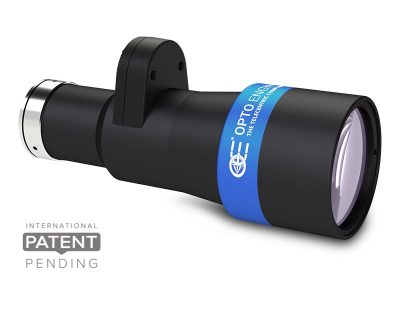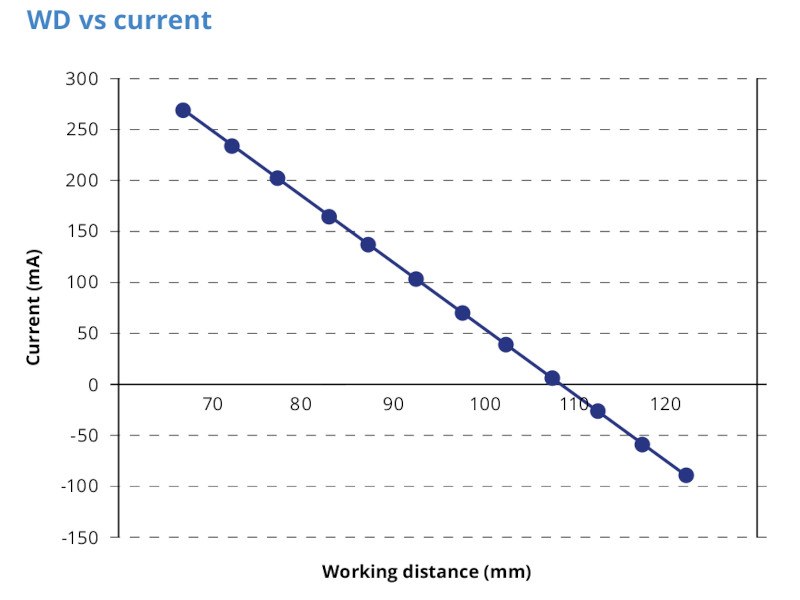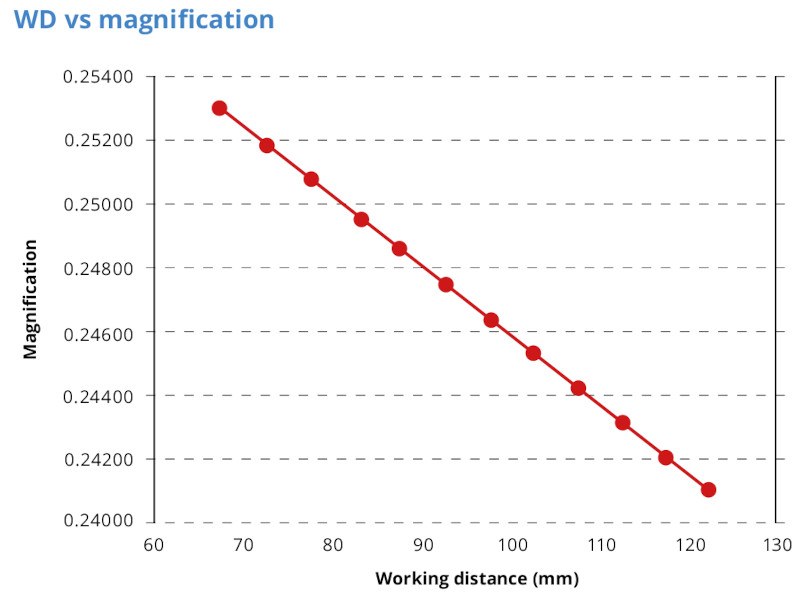TCEL series
Telecentric optics with liquid lens technology
Not available in Japan.
Key advantages
- Extended depth of field
Thanks to the integration of Optotune liquid lenses it is possible to significantly extend the DOF of telecentric optics - Excellent optical performances
The optical design of the lenses allows to obtain very low distortion and superior optical performances - Precise and quick autofocus
Electronically driven liquid lenses allow for extremely fast and precise changes of focus - Detailed test report with measured optical parameters
TCEL series by Opto Engineering® features a perfect combination of telecentric optics and liquid lenses technology allowing to significantly increase the depth of field (DOF). This is particularly important for small fields of view due to the proportionality of the DOF with the magnification.
Thanks to their optical design, TCEL lenses ensure excellent optical performances both in terms of telecentricity and especially distortion throughout the entire operating range. This makes them a perfect choice for many inspection and measurement applications ranging from the electronics and semiconductors industry, to the automotive sector.
The built-in, electronically controlled Optotune liquid lenses enable to precisely tune the optical power of telecentric lenses adjusting the focus: this adjustment can be extremely fast with response times in the order of few milliseconds. The driver comes as a compact USB-powered current source with free software and can be used as a stand-alone solution or integrated into OEM designs. Communication follows an open simple serial protocol, which can be implemented in any programming language on Windows or Linux (C#, Labview and Python source code available).
Didn't find what you were looking for?
Don’t worry! We can integrate liquid lenses with many other models including those with coaxial illumination. Feel free to contact our Sales Engineers to check the feasibility.
DIDN’T FIND WHAT YOU WERE LOOKING FOR?
Don’t worry! We can integrate liquid lenses with many other models including those with coaxial illumination. Feel free to contact our Sales Engineers to check the feasibility.
Application example
Instead of using a larger lens (left) and a higher resolution camera to compensate for it, with the TCEL series (right) it is possible to extend the DOF of a lens that is properly dimensioned for the sample.
Both the driving current and the magnification are linearly proportional to the working distance, allowing the system to be calibrated to compensate for the inevitable variations in magnification due to the liquid lens (by way of example, the graphs relating to the TCEL23036 lens are shown).
Notes
- Field of views are calculated at 0 dpt power of the liquid lens.
- Working distance (nominal): distance between the front end of the mechanics and the object at 0 pdt power of the liquid lens.
- Minimum and maximum working distance are reported at nominal range of the liquid lens; maximum excursion may be larger.
- Working f-number (wf/N): the real f-number of a lens in operating conditions.
- Maximum angle between chief rays and optical axis on the object side, evaluated at 0 dpt power of the liquid lens. Typical (average production) values and maximum (guaranteed) values are listed.
- Maximum values calculated in the range -2 to +3 dpt of the liquid lens.
- Percent deviation of the real image compared to an ideal, undistorted image, , evaluated at 0 dpt power of the liquid lens. Typical (average production) values and maximum (guaranteed) values are listed.
- At the limits of the depth of field, the image can still be used for measurements. For a very sharp image, however, only half of the depth of field should be considered. Pixel size used for calculation is 3.45 μm.
- Object side, calculated with the Rayleigh criterion with λ= 520 nm
- Typical at 30°C, 0 to ±250 mA step.
- Indicates the availability of an integrated camera phase adjustment feature.
- Measured from the front end of the mechanics to the camera flange.
Additional notes
- Performances calculated with monochromatic light (LED emission); performance range in white light is smaller.
- Performances guaranteed when used with vertical optical axis; when used with horizontal optical axis performances drop due to gravity induced aberrations of the liquid lens.














